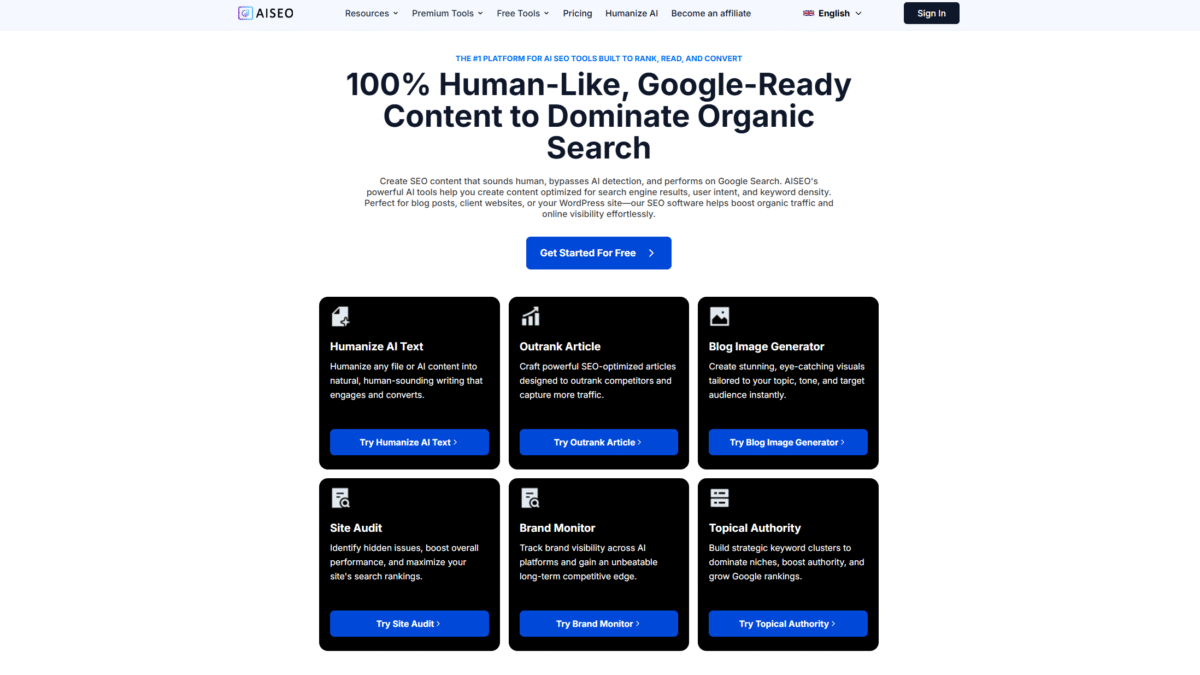
7 Simple Ways to Detect AI Writing in Any Content
Searching for the ultimate guide to detect ai writing? You’ve come to the right place. In today’s digital landscape, distinguishing between human-crafted copy and machine-generated text can be challenging. Fortunately, tools like AISEO offer advanced humanization features that help you not only detect AI writing but also transform it into authentic, compelling content.
Whether you’re a content marketer, educator, or editor, understanding the telltale signs of automated text will empower you to ensure authenticity and maintain trust with your audience. Let’s explore seven simple, practical methods to detect AI writing in any content.
1. Analyze Sentence Structure and Repetition
AI-generated text often follows rigid templates and can repeat phrases or sentence patterns. To detect ai writing, look for:
- Identical sentence openers or closers across multiple paragraphs.
- Overuse of common transitional phrases like “Furthermore” or “In conclusion.”
- Repetitive information presented with only minor variations.
2. Check for Lack of Personal Anecdotes or Unique Insights
Humans naturally draw on experiences, emotions, and niche perspectives. If the content:
- Feels generic or devoid of real-life examples.
- Doesn’t reference specific dates, events, or personal viewpoints.
- Uses broad statements without concrete supporting details.
These can be red flags signaling AI origin.
3. Evaluate Consistency of Tone and Voice
While consistency is desirable, overly uniform tone throughout an entire piece can hint at AI involvement. Watch for:
- Unvarying formality—never shifting between casual and formal.
- Absence of rhetorical questions or direct engagement with the reader.
- Monotonous pacing without natural ebb and flow.
4. Spot Unusual or Overly Formal Vocabulary
AI models sometimes employ vocabulary that feels out of place. To detect ai writing, look out for:
- Overly sophisticated words when simpler alternatives would suffice.
- Technical jargon misused or shoehorned into context.
- Odd word combinations that a human author wouldn’t naturally choose.
5. Examine Logical Flow and Coherence
AI-generated content can lack true understanding of cause-and-effect. Check for:
- Sudden topic shifts without proper transitions.
- Repeating the same point in different sections as if filling space.
- Conclusions that don’t logically follow the preceding arguments.
6. Use Automated Detection Tools as a Second Opinion
Several AI detection platforms analyze text patterns and flag probable machine-generated content. While no tool is 100% accurate, combining manual review with scanners improves your chances to accurately detect ai writing. Keep in mind that advanced tools also evolve to bypass detection.
7. Assess Emotional Depth and Contextual Nuance
Human writers convey genuine emotion and cultural context. AI often struggles here. Look for:
- Authentic anecdotes that resonate emotionally.
- Subtle humor, sarcasm, or cultural references executed well.
- Rich sensory details—smells, sounds, and feelings—that ground the reader.
Transform and Protect Your Content with AISEO
After you’ve learned how to detect ai writing, the next step is ensuring your own creations remain unmistakably human. With its Humanizer and AI Chatbot features, AISEO helps you rewrite, refine, and elevate machine-generated drafts into natural, authentic copy that passes every AI-detection tool. Maintain your brand voice, enhance readability, and safeguard your content’s integrity—all in one platform.
Ready to level up your writing process? Try AISEO for Free Today and experience seamless humanization, plagiarism-free output, and SEO-optimized results.
